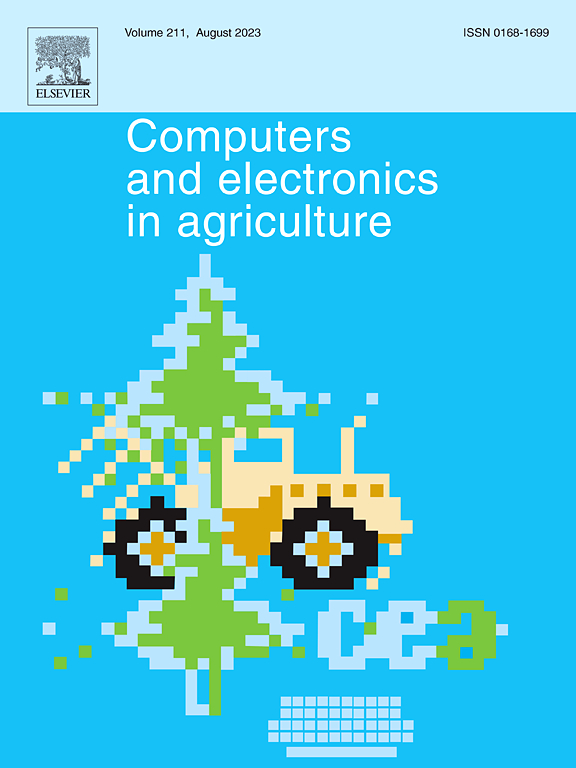Enhancing decision support in crop production: Analyzing conformal prediction for uncertainty quantification
IF 8.9
1区 农林科学
Q1 AGRICULTURE, MULTIDISCIPLINARY
引用次数: 0
Abstract
Assessing the confidence of machine learning models is increasingly important for enhancing decision support in digital agriculture. Addressing this challenge involves identifying and classifying sources of uncertainty and applying a suitable quantification method. To fully realize the potential of uncertainty quantification in digital agriculture, it is necessary to explore and evaluate different techniques, demonstrating their effectiveness in diverse scenarios. In this paper, we focus on the conformal prediction (CP) framework, specifically inductive conformal prediction (ICP), as a non-parametric tool for uncertainty quantification. Conformal prediction has gained a foothold for its multiple advantages, including being model-agnostic – requiring no retraining or changes to model architecture – and computationally efficient. Moreover, CP operates under a distribution-free framework, making no assumptions about the data, and provides calibrated uncertainty estimates where empirical errors match pre-defined theoretical levels. These properties make it particularly well-suited for agricultural tasks, where datasets often exhibit variability across regions and lack reliable ground truth labels. Through ablation studies, we comprehensively analyze ICP’s performance as a post-hoc approach for ResNet-18 and ViT-B/16, demonstrating that both achieve the required pre-defined error levels. We compare ICP performance against other methods in diverse agricultural tasks, including out-of-distribution detection and covariate shift. Our experiments highlight CP’s unique benefits, such as validity, efficiency, and low computational overhead, making it a promising approach for developing more reliable agricultural machine learning systems.
增强作物生产决策支持:不确定性量化的适形预测分析
评估机器学习模型的信心对于增强数字农业中的决策支持越来越重要。解决这一挑战涉及识别和分类不确定性的来源,并应用合适的量化方法。为了充分发挥不确定性量化在数字农业中的潜力,有必要探索和评估不同的技术,展示其在不同场景下的有效性。本文重点研究了共形预测框架,特别是归纳共形预测(ICP)作为不确定性量化的非参数工具。共形预测因其多重优势而获得了立足点,包括与模型无关——不需要再训练或改变模型架构——以及计算效率。此外,CP在无分布的框架下运行,对数据不做任何假设,并提供校准的不确定性估计,其中经验误差与预先定义的理论水平相匹配。这些特性使其特别适合农业任务,其中数据集经常表现出跨区域的变化,并且缺乏可靠的地面真值标签。通过消融研究,我们全面分析了ICP作为ResNet-18和vitb /16的事后处理方法的性能,证明两者都达到了所需的预定义误差水平。我们比较了ICP与其他方法在不同农业任务中的表现,包括分布外检测和协变量移位。我们的实验突出了CP的独特优势,如有效性,效率和低计算开销,使其成为开发更可靠的农业机器学习系统的有前途的方法。
本文章由计算机程序翻译,如有差异,请以英文原文为准。
求助全文
约1分钟内获得全文
求助全文
来源期刊

Computers and Electronics in Agriculture
工程技术-计算机:跨学科应用
CiteScore
15.30
自引率
14.50%
发文量
800
审稿时长
62 days
期刊介绍:
Computers and Electronics in Agriculture provides international coverage of advancements in computer hardware, software, electronic instrumentation, and control systems applied to agricultural challenges. Encompassing agronomy, horticulture, forestry, aquaculture, and animal farming, the journal publishes original papers, reviews, and applications notes. It explores the use of computers and electronics in plant or animal agricultural production, covering topics like agricultural soils, water, pests, controlled environments, and waste. The scope extends to on-farm post-harvest operations and relevant technologies, including artificial intelligence, sensors, machine vision, robotics, networking, and simulation modeling. Its companion journal, Smart Agricultural Technology, continues the focus on smart applications in production agriculture.
 求助内容:
求助内容: 应助结果提醒方式:
应助结果提醒方式:


